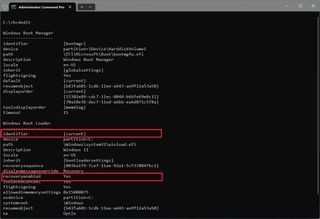Windows 10, like its successor Windows 11, includes an automatic repair feature designed to diagnose and fix common startup issues. This feature kicks in when your computer fails to boot correctly twice in a row. During the third startup attempt, the system initiates a self-repair process, running diagnostics to resolve typical boot problems automatically.
While Automatic Repair is often helpful, there are situations where you might want to disable it. For instance, if you prefer to troubleshoot startup problems manually, or if the automatic repair itself gets stuck in a loop, preventing your system from starting normally. Fortunately, it is possible to skip or disable automatic repair in Windows 10.
This guide will walk you through the necessary steps to turn off automatic diagnosis and repair in Windows 10. Additionally, if you have previously disabled this feature and wish to re-enable it, we will also cover the steps to do so.
How to Disable Automatic Repair in Windows 10
To disable the automatic repair feature that activates after the third unsuccessful boot in Windows 10, follow these steps using Command Prompt:
- Click on the Start button.
- Type Command Prompt in the search bar.
- Right-click on Command Prompt from the search results and select Run as administrator to open it with administrative privileges.
- In the Command Prompt window, type the command below and press Enter to execute it:
bcdedit - This command will display the boot configuration data. Under the “Windows Boot Loader” section, verify that the “recoveryenabled” value is set to “yes” and the “identifier” is “{current}”. This confirms the current status of automatic repair.
- To disable automatic repair, type the following command in Command Prompt and press Enter:
bcdedit /set {current} recoveryenabled noIn this command, “{current}” specifies that you are modifying the settings for the currently running operating system, and “no” is the value to disable the automatic repair feature.
After completing these steps, the automatic diagnosis and repair feature will no longer automatically run after the third unsuccessful boot attempt on your Windows 10 computer.
How to Enable Automatic Repair in Windows 10
If you have previously disabled automatic repair and want to re-enable it, or if it is currently disabled, use these steps to turn it back on:
- Open Start.
- Search for Command Prompt, right-click on it, and choose Run as administrator.
- Type the following command in Command Prompt and press Enter:
bcdedit - Check under the “Windows Boot Loader” section to confirm that “recoveryenabled” is set to “no” and “identifier” is “{current}”. This indicates that automatic repair is currently disabled.
- To enable automatic repair, type the command below and press Enter:
bcdedit /set {current} recoveryenabled yes
Similar to disabling, “{current}” targets the current OS, and “yes” is the value to re-enable automatic repair.
Once you have completed these steps, if your Windows 10 device encounters startup problems, the system will automatically attempt to diagnose and repair common issues that might be preventing Windows from loading correctly.
By following these instructions, you can easily manage the automatic repair feature in Windows 10, tailoring it to your troubleshooting preferences and ensuring a smoother system operation.


